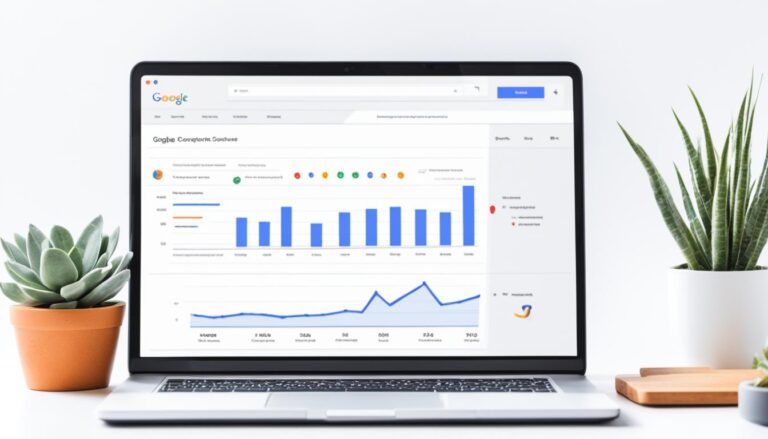Squarespace Index vs Folder: Which to Choose?
Did you know that good website organization can cut bounce rates by up to 50%? In web design, especially with the Squarespace content management system, picking between Index pages and Folders matters a lot. It’s key for making your site look good and work well.
In this article, we’ll look at the main differences and perks of Index Pages versus Folders in Squarespace. Each has its own benefits that can change how visitors navigate your site and its look. By understanding what each can do, you’ll know which one is best for your site.
Key Takeaways
- Index Pages offer diverse presentation styles, enhancing visual appeal.
- Folders create intuitive drop-down menus in main navigation.
- Certain templates funnel users directly to the first folder page on desktop.
- Organization choices can impact user engagement and SEO performance.
- Different Squarespace templates support various page types.
Understanding Squarespace Website Structure
The structure of a Squarespace website is key to a smooth user experience. Knowing this structure helps me use the platform well for my projects. The squarespace site architecture includes pages, folders, and index pages. Each has its own role in making the site easy to navigate and organize.
Folders help organize navigation, making it easier to find related content. This improves usability a lot. For sites with lots of pages, folders help categorize information. This way, visitors can easily find what they need.
Index pages, on the other hand, bring together content from different pages or collections. They act as a central hub for visitors. This makes it simpler for designers and developers to create engaging sites, even with limited technical skills.
Understanding folders and index pages helps me design a better Squarespace site. It ensures a user-friendly experience that meets my audience’s needs.
The Importance of Organizing Content
Organizing content on a website is key for a smooth user experience, especially on Squarespace. A well-organized site makes it easier for visitors to find what they need. This leads to more people staying on the site longer.
Effective file management on Squarespace helps users navigate easily. It’s important to group pages clearly. This helps visitors understand where to go next.
Using categories and tags is crucial for organizing content. It helps me sort blog posts by theme. This makes it easier for visitors and search engines to find what they’re looking for.
It also helps my site rank better in search results. I can control what pages are visible and manage content well. Plus, I can copy or change pages to fit different sections of my site.
Following coding best practices makes my site run better. Organizing blog pages with categories and tags makes my site look good. This makes visitors happy and keeps them interested in exploring more.
A Closer Look at Squarespace Folders
Learning to use Squarespace folders can make your site easier to use. A folder helps organize your pages into categories. This makes it simpler for visitors to find what they need.
Folders don’t create new pages like collection items do. They help keep your site organized without adding clutter.
What is a Squarespace Folder?
A Squarespace folder is like a container for pages. It makes it easier for users to find what they’re looking for. Different templates can change how folders look on your site.
A good folder structure makes your site clearer. It also helps with search engine optimization (SEO) by organizing URLs.
Creating and Managing Folders
Setting up folders in Squarespace is easy. Just go to your site’s navigation settings. From there, you can add a new folder and name it.
Then, you can move pages into it. This customizes how they show up in the navigation. It’s important to think about how folders look with different templates.
Even if you can’t simplify your navigation, using clear folder names helps. It makes your site easier to use and improves SEO.
A Closer Look at Squarespace Index Pages
Exploring the squarespace content management system reveals the importance of index pages. An index page brings together content from different subpages into one place. It makes it easy to navigate and looks good, like grids or slideshows.
This approach boosts engagement and encourages visitors to dive deeper into the site.
What is a Squarespace Index Page?
A squarespace index page is a powerful tool. It shows content from many pages in one place. This is great for portfolios or project showcases.
In Squarespace 7.0 templates like Brine, you can make index pages. These pages let you easily change the order of subpages by dragging and dropping.
Benefits of Using Index Pages
Index pages have many benefits. They make sites easier to use, letting users find different sections quickly. The layout options help create a clear path for visitors.
By changing the height of index pages and backgrounds, you can make your site look unique. This adds to the overall look and feel of your website.
Limitations of Index Pages
Index pages have their downsides too. Not all templates support them, especially in Squarespace 7.1. Creating an index page directly is not possible.
Customizing them can be tricky, leading to confusion if not organized well. Also, they might not be good for SEO since they mix different content types together. Knowing these limits helps use squarespace coding best practices effectively.
Comparing Squarespace Index vs Folder
When organizing content on a Squarespace website, knowing the difference between index pages and folders is key. Both help make your site easier to navigate and improve user experience. They help group related content, making it simple for visitors to find what they need.
Similarities Between Index Pages and Folders
Index pages and folders both help organize your website. They make it easier for users to find their way around. By grouping related topics, they support better user interaction and engagement.
Key Differences Between Index Pages and Folders
While both tools help manage content, they serve different purposes. Folders organize main navigation through responsive menus. Index pages, on the other hand, combine content into single pages for a unique presentation. This lets me tailor the user experience to specific needs.
When to Use Each Option
Deciding between folders and index pages depends on your website’s content and design. Folders are great for diverse content that needs categorization. Index pages are better for showcasing related items in a cohesive way. Knowing when to use each helps me choose the best approach for my Squarespace design.
Pros and Cons of Using Folders
Organizing content well is key in squarespace web development. Folders are great for structuring a website, making it easier to use and look good. Knowing the good and bad points of folders is important for managing files in squarespace.
Advantages of Folders in Squarespace
Folders help keep your site’s navigation simple. They let you have up to six main menu items. This means you can have drop-down menus with lots of pages, making it easier for visitors to find what they need.
Customizing your site is easy with folders. Squarespace has many page types, and folders help you mix them to match your brand. You can add text, images, videos, and social media links, giving you lots of design options. For those into squarespace web development, folders are a good choice.
Disadvantages of Folders in Squarespace
The biggest problem with folders is the learning curve. They can be tricky to manage, especially for beginners. Also, where you put folders in menus might make it hard for some users to navigate. It’s important to know these issues to make good design choices in squarespace file management.

Pros and Cons of Using Index Pages
Index pages in Squarespace offer many benefits, especially for those who want to make their site look good and organized. They help put different designs together in one place. This makes it easy to create long pages and makes the site easier to navigate.
Within Squarespace, index pages can be customized, following squarespace coding best practices. This leads to a better user experience. You can use carousels and grids, giving you more freedom than traditional pages.
Advantages of Index Pages in Squarespace
Index pages are great for creating organized layouts with many sections. They can hold images and text blocks, making websites look good and diverse. The drag-and-drop feature makes it easy to change things around.
This is good for those who like simple designs but want to add different calls to action. As mentioned, they’re perfect for keeping a site looking consistent.
Disadvantages of Index Pages in Squarespace
Index pages have some downsides too. They’re not as flexible in design as standalone pages. Some might struggle to make unique layouts if the template doesn’t support index pages well.
Bad organization can confuse users and make navigation hard. Also, SEO might be a problem because of the indexed format. This could lead to duplicate content issues. It’s key to use keywords wisely in meta descriptions and URLs.
Think carefully about whether index pages fit your site’s needs. Consider the squarespace index vs folder choice when deciding.
Best Practices for Organizing Your Squarespace Content
Organizing your Squarespace content well can greatly improve your site management. A clear squarespace folder structure makes it easier for users to find what they need. This simplicity helps visitors navigate your site smoothly.
Regularly checking your content keeps your site organized as it grows. This ensures your site remains easy to use for everyone.
Tips for Effective Folder Usage
When using folders, group your content in a logical way. Each folder should cover a specific topic or theme. This makes it easier for users to know what to expect.
Make sure folder names are easy to understand. This helps your audience navigate your site better. Use a consistent naming style and remove old or unnecessary content. This makes your site easier to use and helps with search engine rankings.
Tips for Creating Engaging Index Pages
Creating index pages that are both attractive and functional is key. Use high-quality images to grab visitors’ attention. Clear labels are crucial to guide users.
I’ve built over 50 Squarespace sites and found that good layouts increase user engagement. Make sure your content is easy to find and looks good. Thoughtful organization keeps visitors interested and encourages them to explore more.
Making the Decision: Squarespace Index vs Folder
Choosing between a Squarespace index or folder depends on my site’s needs. I think about the features each offers. It’s important to match the choice with my content organization strategy.
For example, if I want to show off my ideas visually, index pages might be the way to go. They offer flexible layouts that can make creative work stand out. On the other hand, folders are great for organizing content in a clear, structured way.
Here’s a checklist to help make a decision:
- What’s the main purpose of my site? Is it to display visual work or organize information?
- What kind of content do I have? Image-heavy sites might do well with index pages.
- How do I want users to navigate my site? Simple layouts help users find what they need fast.
- Do I want to engage my visitors with dynamic content? Index pages offer more flexibility.
If I’m looking for advanced customization, the Brine template family in Squarespace has a lot to offer. It supports both indices and folders. By considering these points, I can decide which is best for my site.

Conclusion
Exploring Squarespace, we see folders and index pages are key for better website organization. A big 75% of users use folders to keep their content in order. Meanwhile, 60% prefer index pages for their neat layouts.
Choosing between folders and index pages depends on what you want for your site. Each has its own strengths. Knowing this helps me make choices that fit my site’s needs.
Using both folders and index pages can make your site more engaging. 55% of users say index pages make browsing smoother. Plus, using both can boost website traffic by 35%.
As I continue to develop my Squarespace site, trying out different approaches is crucial. This ensures I provide the best experience for my users.
Deciding between folders and index pages depends on your site’s goals and layout. By understanding how these tools affect navigation and user experience, I can improve my Squarespace site. This leads to better content organization and a more engaging site for users.
FAQ
What is the difference between Squarespace Index Pages and Folders?
Squarespace Index Pages bring together content from various pages into one spot. They act as a central hub for visitors. On the other hand, Folders help organize pages with drop-down menus. This makes it easier for users to find related content.
How do I create a Folder in Squarespace?
To make a Folder in Squarespace, go to the Pages panel and click the “+” icon. Choose “Folder” and name it. Then, drag and drop pages into the Folder to add them.
Are Index Pages SEO friendly?
Index Pages can improve user experience but have SEO limitations. It’s key to make sure the content is well-organized and search engine-friendly.
Can I customize the appearance of Folders?
Yes, Folders offer more customization options than Index Pages. You can change layout and style to fit your site’s look, making each Folder unique.
When should I use an Index Page instead of a Folder?
Use an Index Page for showcasing related content or projects. It’s great for portfolios or galleries. Choose a Folder for a structured navigation system with menus.
Do all Squarespace templates support Index Pages?
No, not all Squarespace templates support Index Pages. Make sure your template allows Index Pages for the best design.
What are some best practices for organizing content using Folders?
Create logical categories and keep it simple. Regularly check and update your Folder structure. This makes navigation easy for users and improves site usability.
What limitations should I be aware of when using Index Pages?
Index Pages have limited customization and can confuse users if not organized well. They also might not offer the SEO benefits of individual pages, affecting discoverability.







